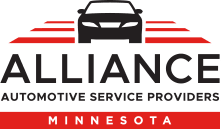Exploring SHOP LIABILITY: Is a Partial Repair Ever Acceptable?
With all the conversations that take place in this industry, it can surely feel like billboards are out there flashing “complete and proper repair” just about everywhere you turn. But, realistically, is it something that shops can fully promise or deliver?
Perhaps, there should be signs flashing caution to the many cars that roll off lots when those promises are not met.
Here’s the situation: Shops have more access to information on OEM repair procedures than ever before and with that comes increasing pressure to find and follow all procedures for each new job that comes into the shop. The days of only having to look up procedures when you can’t figure something out on your own are basically over. One of the major motivating fears that shops have pushing them to research procedures is a vehicle they worked on ending up in a deadly accident, and those fatalities being blamed on the shop. Yet, shops face the hard challenge of negotiating with customers and payers for complete repairs that are, unfortunately, frequently denied or put off.
Therefore, shops may not be performing all tasks related to a complete repair or recommended maintenance for numerous reasons, both accidental and intentional, including: failure to diagnose all necessary repairs, customers choosing to put off repairs, payment limitations or issues (i.e. arguing with an insurer or a customer who does not want to pay for certain things), to name a few.
AASPMN News has previously explored the various factors that inadvertently give shops no choice but to perform a complete repair (see “Is a Partial Repair Ever ‘Good Enough?’” Parts 1 and 2” grecopublishing.com/aasp0824coverstory and grecopublishing.com/aasp0924coverstory). This month, we reached out to attorney Chris Yetka of Larkin Hoffman to take the conversation further by diving into the legalities behind the unsettling practice of partial repair.
AASPMN News: What are the main liabilities when a shop does not make repairs that they have identified as needed at that time, or in the near future?
Chris Yetka: If the needed repair affects the safety of the vehicle and the vehicle causes an accident, it could expose the shop to a lawsuit. If the shop informs the car owner of the issue, and the owner refuses to do the repair and takes the car, it is the vehicle owner who is likely more liable for any damage or injury, but that does not insulate the shop from a suit. The shop can ask for a waiver of liability (which, again, potentially protects them from damages, but not from being sued), or in extreme cases where the vehicle poses an immediate threat of harm, or they could tell the customer that they will release the vehicle, but will be informing authorities of the shop’s belief that the vehicle is unsafe.
AASPMN: Is there a way the shop can fully put the liability onto the customer or payer who has knowingly denied the needed repairs the shop identified?
CY: A liability waiver is always an option, but it does not completely eliminate risk. The individual providing the waiver may not have sufficient insurance or assets to make good on the waiver, and even a waiver does not limit the ability of an injured party to drag in the shop. A waiver is better than nothing, but again, if the shop truly believes that releasing the vehicle poses an immediate risk, the best approach is to alert authorities of their concern. In any case, whether a waiver is obtained or not, the shop should identify the issue and inform the customer of the issue and potential dangers.
AASPMN: Some shops may think that if they pretend that they didn’t know there was a problem, or even try to claim there was not a problem when they had the vehicle, they are removing themselves from the issue, but willful blindness is something that they can be liable for just the same. Does the liability change depending on if they do, or do not, disclose the issues to the customer? What best business practices could shops put in place to protect themselves when customers turn down repairs?
CY: Taking a blind-eye approach increases the risk to the shop. In that instance, the injured party will look to the shop for all liability because the automobile owner can plausibly deny they knew there was a problem. Again, if the shop knows of issues, they should be clearly described, and if there is substantial risk, a waiver should be obtained. In those exceptional cases where the threat of injury and damage is clear, it may be the best approach to notify the authorities if the vehicle is not towed away.
AASPMN: Customers do sometimes have issues with their vehicles following a repair that may or may not be related to the repair. This is particularly true with calibration issues. Is there a statute of limitations or other legal mechanisms to protect a shop if a customer comes back months or years later with a complaint, or worse, based on repairs that were not done or were incomplete? Are there best practices regarding what to include in repair agreements to help address this?
CY: The best practice is to describe any and all issues that are noticed at the time of the repair, and also to specifically identify what work was done and what work was not done. Ultimately, the customer will have to prove that the work done, or not done, by the shop was the cause of the future issues, and that the shop was responsible for them. The statute of limitations for breach of contract is six years, but different, shorter limitations periods could apply, depending on the nature of the claim.
AASPMN: When insurance companies or vehicle warranties are the payers, the conversation about what is covered versus what is needed for a full repair can be contentious. If these companies were to claim a given repair step is not needed and the shop agrees to skip that step, does the full liability still fall to the shop if something goes wrong?
CY: An insurance company stating that a repair is not needed provides some level of protection to the shop. However, if it is clear that a dangerous aspect of the repair is being left undone, it would be best to again ask for a waiver, have the customer sign an acknowledgement, and in serious cases where the danger is manifest, inform the authorities.
AASPMN: Minnesota does not require vehicle inspections, which means there is not a clear list of minimum required standards for determining when a vehicle is or is not safe to drive on Minnesota roads. Minnesota also does not have any sort of shop licensing related to work being performed on a vehicle and very limited laws regarding repair requirements of the shop. Does this mean it is a judgement call by the shop regarding when to tell a customer a vehicle is unsafe to drive? How does the absence of clear guidelines impact liability for a shop? How about when the issue is not safety, but is related to the performance and longevity of the vehicle?
CY: It is a judgment call for the shop. In any litigation, it will come down to expert testimony on what the standard is. I would look at this from a common sense approach. Things like brakes and fuel systems are pretty clearly dangerous, and should be flagged and treated with appropriate seriousness. Other items may not be as cut and dry. If safety is not an issue, and only performance or longevity, the potential liability is significantly reduced. Again, the best approach is to inform the customer of the risks of not performing service, and get them to sign that acknowledgement, or at least have them sign off on the fact that a recommendation was made.
A Note From AASPMN Executive Director Linden Wicklund
Partial repairs are a touchy subject. Ideally, full repairs are done every time a vehicle is worked on. AASPMN’s goal is to provide clarity for those navigating what to do next when a customer or payer has turned down needed repairs. Since Minnesota does not have inspections on all vehicles, there is not a clear minimum standard to determine if a vehicle is roadworthy, thus shops wind up having to make a judgement call. Shops can simply refuse to work on a vehicle when they know the customer is only going to approve partial repairs, but it often isn’t that simple.
There are several laws that shops can look to when trying to understand what the state deems roadworthy. Most of these laws hold the vehicle owner accountable for violations, but that doesn’t stop the vehicle owner suing a shop to deflect responsibility. The best resource for what repairs may be needed continues to be the OEM procedures. The following Minnesota statutes related to vehicle safety can be found at: revisor.mn.gov/statutes/.
• 169.47 - Unsafe Equipment– Consumers are liable for the safety of their vehicles while being driven by themselves or others. • 169.46 through 169.75 - Motor Vehicle Safety Standards– Mostly related to vehicles fit for sale, titling, or use, not on shop requirements.
• 325F.6641 - Disclosure of Vehicle Damage– Consumers are liable for the safety of their vehicles and must disclose damages to future owners. This mostly is referenced when a customer wants to repair a vehicle that is a total loss but does not have the insurance company take ownership and sell it back to the customer. When the insurance company takes ownership, then the title is stamped.
• 325E.0952 - Airbag Replacement– Vehicles seven years or newer, acts by collision repair shop. Federally, there is one small bit of law regarding the aftermarket. It is mostly targeted at window tinting and other vehicle modifications that intentionally interfere with the safe operation of a vehicle. Other federal standards that regulate vehicles at point-of-sale could be referenced by an expert witness.
• 30122 of the US Code is available at bit.ly/UScode30122.
Hopefully, more knowledge on this subject can help shops make empowered decisions on how to navigate hard situations. AASPMN has a sample waiver for shops to use and modify as needed. Larkin Hoffman can work directly with shops on creating a waiver that meets their specific

